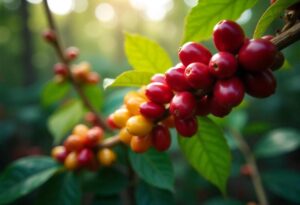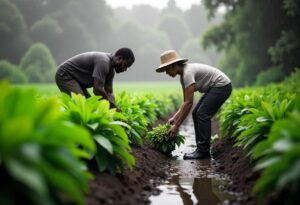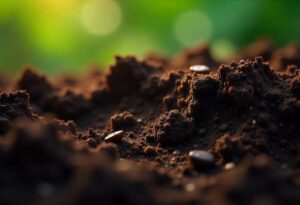Introduction: Understanding the Impact of Climate on Coffee Bean Quality
The quality of coffee beans hinges on numerous environmental factors, making “climatic conditions” a core component in shaping coffee’s flavor, aroma, and overall appeal. For food industry professionals, understanding these nuances is essential, as “coffee quality factors” determine the final product’s success in a competitive market. This article explores key climate variables like altitude, temperature, rainfall, and soil conditions, revealing how each impacts the coffee bean’s sensory profile. By appreciating the link between environmental factors and coffee quality, businesses can refine their sourcing and production strategies to deliver premium coffee that meets consumer demand.

It is recommended to read The Difference Between Arabica and Robusta Coffee by clicking here.
The Role of Altitude in Enhancing Coffee Bean Flavor
The quality of coffee beans is heavily influenced by various environmental factors, with climatic conditions playing a central role in shaping the flavor, aroma, and overall appeal of the best coffee beans. For food industry professionals, understanding these nuances is crucial, as coffee bean quality is a key determinant of a product’s success in the competitive market. This article delves into essential climate variables, including altitude, temperature, rainfall, and soil conditions, to reveal how each contributes to the sensory profile of the best coffee beans. By recognizing the connection between environmental factors and coffee bean quality, businesses can enhance their sourcing and production strategies to consistently deliver premium coffee that aligns with consumer expectations.
Temperature and Its Direct Impact on Coffee Quality
Temperature directly affects coffee bean development. Optimal temperatures between 18-24°C ensure balanced growth, yielding beans with a rich and complex flavor profile. Higher or fluctuating temperatures may hinder development, leading to reduced quality. For suppliers, maintaining temperature stability through strategic sourcing or cultivating at ideal locations helps achieve consistent coffee quality, crucial for meeting market demand and preserving brand reputation.

Rainfall and Its Role in Coffee Bean Growth and Quality
Rainfall is another crucial element, as coffee plants require sufficient water for fruit development. However, excess or inadequate rainfall can adversely affect quality. Balanced and well-distributed rainfall throughout the growing season promotes optimal growth, while extremes lead to challenges like over-ripening or disease. Suppliers who understand regional rainfall patterns can select coffee beans cultivated under ideal conditions, thereby ensuring higher quality in the final product.
Soil Quality and Its Influence on Coffee Taste and Aroma
Soil quality significantly influences coffee bean flavor. Nutrient-rich, well-draining soils produce beans with complex flavors and aromas. Elements like nitrogen, phosphorous, and potassium contribute to the coffee’s taste, while other minerals enhance aroma. By sourcing from regions with fertile soil, suppliers can ensure a product with superior taste characteristics, catering to high-end market expectations.

Conclusion: Embracing Climate Insights to Elevate Coffee Quality
Understanding the impact of climatic conditions on coffee quality provides businesses with an opportunity to source and produce beans that align with consumer demands. From altitude to soil quality, each factor plays a crucial role in developing a distinct coffee profile. By partnering with suppliers who prioritize these elements, companies can guarantee a consistent, high-quality product, setting themselves apart in a competitive market.





